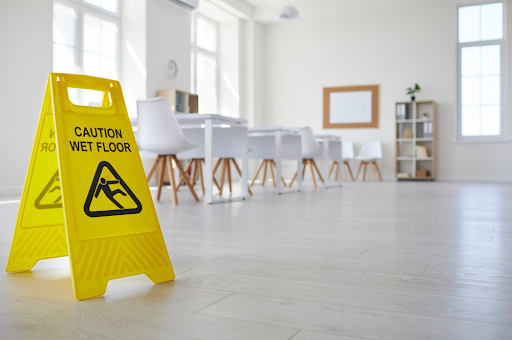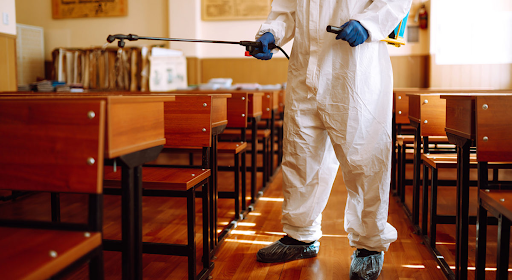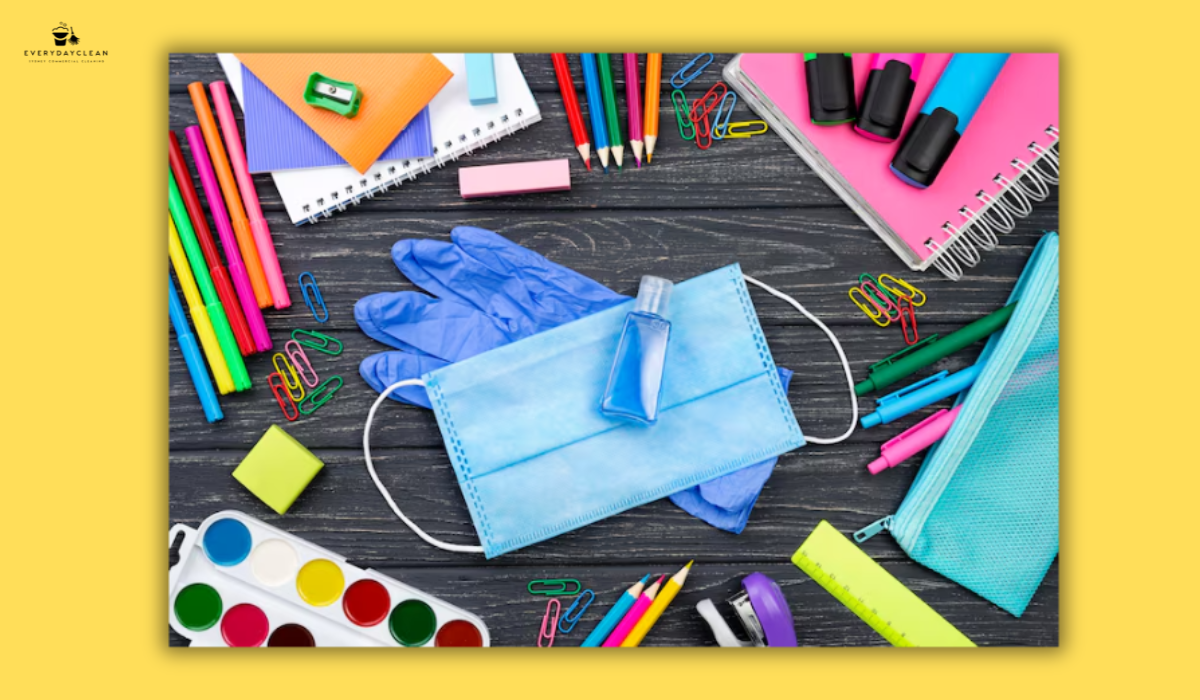Commercial Cleaning Schools Guide: Expert Tips & Protocols
School facilities experience constant foot traffic, shared surfaces, and high-use areas that require structured, professional cleaning. This Commercial Cleaning Schools Guide explores the best practices, equipment, and approaches for maintaining cleanliness in classrooms, bathrooms, cafeterias, and common areas. From entryways to high-touch surfaces, keeping school environments clean isn’t just about appearance — it ensures functional, productive spaces for students and staff.
Why Professional Cleaning Matters in Educational Facilities
Commercial cleaning services tailored for schools go beyond surface-level tidying. They deliver consistent, methodical upkeep aligned with school operations, helping maintain presentable learning environments, improve operational efficiency, and support compliance with cleanliness protocols.
Reducing Build-Up in High-Traffic Zones
Hallways, classrooms, and shared spaces accumulate dust, shoe marks, and debris rapidly. Without a daily cleaning routine, schools face unsightly buildup, wear on flooring, and lingering odours. Commercial cleaning crews use task-based schedules to keep these zones spotless and slip-resistant.
Preserving Property and Infrastructure
Timely cleaning of floors, furniture, and fixtures helps extend their lifespan. Removing tracked-in grit or food spills from tiles, vinyl, or carpet prevents staining, discolouration, and damage. This not only supports visual appeal but also reduces long-term maintenance costs.
For schools looking to implement consistent and efficient upkeep routines, choosing a reliable provider like Everyday Clean can transform their facilities. Learn more about our commercial cleaning solutions that are tailored for education environments.
Key Areas of Focus in School Cleaning Protocols
Each area of a school presents unique cleaning challenges. From shared learning surfaces to food zones and restrooms, effective cleaning plans must prioritise coverage, consistency, and compliance with internal facility standards.
Classrooms and Learning Spaces
Daily cleaning in classrooms supports presentation, clarity, and student engagement. Cleaning staff should:
- Dust surfaces like desks, chairs, shelves, and teacher workstations
- Wipe down whiteboards, light switches, and door handles
- Vacuum or mop floors, especially around desk rows
- Ensure bins are emptied and lined for the next day
Weekly or fortnightly deep cleans may include window interiors, detailed floor polishing, and attention to corners or under-furniture dust accumulation.
School Bathrooms and Locker Rooms
Restrooms and changing areas require strict sanitation procedures. Effective protocols include:
- Cleaning and deodorising toilet bowls, sinks, and taps
- Mopping floors with non-slip, low-residue solutions
- Refilling paper towels, soap, and sanitary bins
- Spot-checking throughout the day for spills or messes
Locker rooms, particularly in sports facilities, may need additional deodorisation and anti-mould treatment where dampness is common.
Cafeterias and Eating Areas
Food-handling zones must be kept visually clean and free of sticky residues. Cleaning programs should:
- Wipe and sanitise tables, seating, and trays
- Clean underneath dining furniture daily
- Sweep and mop food waste promptly to avoid pest issues
- Polish stainless steel fixtures and service counters
Maintaining these areas effectively supports not only hygiene but also the school’s reputation with visitors and parents. Learn more about how we support Sydney education facilities through our
office and shared space cleaning services.
Commercial Cleaning Techniques for Schools
Choosing the right combination of equipment and environmentally responsible products ensures both performance and sustainability in school environments.
Eco-Friendly Products Safe for Educational Use
Modern schools increasingly request green-certified cleaning agents that are:
- Biodegradable and fragrance-free
- Free from harsh chemicals or volatile residues
- Gentle on surfaces and safe for indoor use
These products are effective without overwhelming students or staff with chemical odours, and they help schools meet environmental benchmarks.
Advanced Equipment for Comprehensive Results
Commercial school cleaning now integrates technologies that deliver speed and reach in large or complex layouts. These may include:
- High-filtration vacuums to remove dust from carpeted classrooms
- Steam mops or floor scrubbers for resilient flooring
- Spray-and-wipe systems for large surface areas
- Microfibre cloths and mops to trap dirt without cross-contamination
This equipment is selected to match flooring types, surface finishes, and daily vs deep cleaning needs.
What to Consider When Choosing a School Cleaning Provider
Not all commercial cleaning services are suited to school environments. It’s crucial to find a provider that understands the rhythms and sensitivities of educational operations.
Experience with Education-Focused Cleaning
Providers should have proven workflows for:
- Working around bell times and events
- Accessing secure areas while respecting privacy
- Communicating with the school administration on compliance updates or feedback
Experience ensures fewer disruptions and better integration into your school’s operations.
Flexibility and Customised Scheduling
Schools vary in layout, traffic, and resource needs. Cleaning services should offer flexibility in:
- Frequency of cleaning (daily, weekly, term-based)
- Time slots (after-hours, early mornings, holidays)
- Add-ons like school event cleaning or seasonal deep cleans
Custom schedules ensure each space receives the right attention without interfering with academic activities.
Conclusion: Cleanliness is Part of Operational Excellence
Keeping schools visibly clean, well-maintained, and odour-free contributes to a more productive learning environment. It reflects a school’s commitment to presentation, care, and order. Through structured cleaning routines, use of the right products, and professional oversight, schools can create spaces that support clear focus and everyday functionality.
Looking for a dependable provider to manage your school's cleaning operations? Visit Everyday Clean’s homepage to discover our full range of education-focused services and request your tailored quote.
FAQs about Commercial Cleaning for Schools
What does a commercial school cleaning service include?
Commercial cleaning services for schools generally cover a wide range of tasks, including disinfecting classrooms, deep-cleaning bathrooms and locker rooms, sanitizing cafeteria surfaces, and maintaining hallways and entrances. These services are customizable and can be tailored to meet the specific requirements of each school.
How often should schools be commercially cleaned?
The frequency of cleaning varies by area, but high-traffic spaces like bathrooms, classrooms, and cafeterias should be cleaned daily, with deep-cleaning scheduled weekly or monthly. Some schools may opt for additional cleaning during flu season or other times of heightened illness.
Are eco-friendly cleaning products safe for schools?
Yes, eco-friendly products are often safer for schools as they are free from harsh chemicals and reduce exposure to toxins. These products are designed to be effective while minimizing environmental impact, making them an excellent choice for educational environments.
Can commercial cleaning help reduce illness in schools?
Absolutely. Regular cleaning and disinfecting of high-touch surfaces can significantly reduce the spread of germs and illnesses, creating a healthier environment for students and staff. Studies have shown that cleaner environments can lead to fewer sick days, improving overall attendance and learning outcomes.
What are the benefits of hiring a professional cleaning service for schools?
Professional cleaning services bring expertise, efficiency, and adherence to cleaning standards. By hiring professionals, schools can enjoy a consistently clean environment, cost savings on cleaning supplies and equipment, and peace of mind knowing that high-quality cleaning protocols are in place.
Author: Everyday Clean Content Team
Everyday Clean is Sydney’s trusted provider of professional office, strata, and commercial cleaning services. Our licensed and insured team helps workplaces maintain top hygiene standards with eco-friendly products and proven cleaning systems. With years of experience supporting Sydney businesses, Everyday Clean shares expert tips, real case studies, and practical advice to keep your workplace safe, compliant, and welcoming.




